The history of Korosten dates back to the distant 5th-7th century AD.
On two sides of the picturesque banks of the winding Uzh River, a tributary of Pripyat, on ancient rocks, among free green oaks, the beautiful town of Korosten (Iskorosten) is spread out.
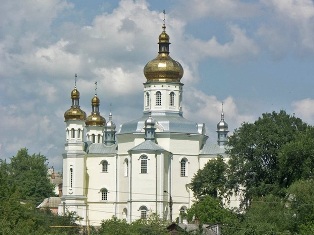
The flower depicted in the center of the city’s coat of arms is flax, which has long been grown in Polissia, the snake symbolizes the Uzh River, which is decorated with its winding banks by the city, the city of Korosten.
Today, Korosten is a city of regional subordination, the center of the district, a major hub railway station, and a major industrial center of Ukraine. Korosten is located on the Uzh River – a tributary of the Pripyat, 90 km north of Zhytomyr, 60 km from the border with the Republic of Belarus and 150 km from Kyiv.
The history of Korosten goes back thousands of years. Back in Paleolithic times, one of Europe’s largest flint deposits attracted primitive people here. The oldest stone tools found here were made by human hands more than 10,000 years ago. During the study of the territory of the city, the beginning of which was laid in 1887. by the famous archaeologist V.B.Antonovych, a number of remains of Neolithic settlements were found, traces of peculiar workshops where tools of the Bronze Age were produced. The first traces of the presence of Slavic tribes in our region date back to the V-VII centuries of our era. Then a whole series of small Slavic settlements appeared in the valley of the Uzh River. On the basis of one of them, located on high granite rocks, the city of Korosten (Iskorosten) arose.
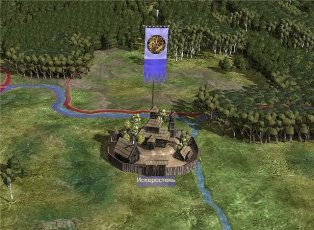 The city became the center of the Drevlians – a powerful and numerous East Slavic tribe. According to historical chronicles, already at the beginning of the 10th century, Iskorosten was a powerful fortress. Surrounded by a strong palisade made of unhewn centuries-old oak trunks, the fortress was the permanent residence of Prince Mal. Hence the first name of the settlement Iskorosten – z-kora-styny.
The city became the center of the Drevlians – a powerful and numerous East Slavic tribe. According to historical chronicles, already at the beginning of the 10th century, Iskorosten was a powerful fortress. Surrounded by a strong palisade made of unhewn centuries-old oak trunks, the fortress was the permanent residence of Prince Mal. Hence the first name of the settlement Iskorosten – z-kora-styny.
With the creation of the feudal state of Kyivan Rus, the Drevlyan land was one of the first to become part of it. Prince Oleg of Kyiv subordinated and taxed the Drevlians in 883, and in 907 they already took part in the victorious campaign against Byzantium. Under the leadership of their princes, the Drevlians zealously fought for independence from the Kiev princes. In 913, after the death of Prince Oleg, they refused to pay tribute to his heir Igor. In 914, Igor conquered them again. However, the Drevlians continued their struggle against Igor and his proteges even later. Year 945. Prince Igor of Kyiv goes through the lands of the Slavic tribes subordinate to him to collect the annual tribute. He goes with an armed and numerous wife, because it is not easy for the Slavs to give back good things earned by hard work. And although Igor is not used to resorting to force and cruelty, it is still not easy. Every time the prince needs more and more. Expeditions to Byzantium and Greece, protection from Pecheneg raids, reconciliation of careless tribes to save the state from disintegration: all this requires money and considerable.
It’s time to pay Drevlyans. They were nicknamed because they live among the “trees”, as their land is completely covered with dense and dormant forests. And the very capital of Drevlya, Iskorosten (Korosten), is built of wood, and the city walls are surrounded by an oak palisade, unhewn, directly with the bark. That is why it is called: Is-koro-sten, a city “made of bark on a wall”. The fortress is formidable, and the people, although seemingly compliant and polite, but “on their own minds”, do not respect the Prince of Kyiv very much.
And their leader himself, Prince Mal, a “tough nut”, is waiting for an opportunity to return the tribe’s independence, which was taken from them by Oleg, Igor’s predecessor. The prince feels how indignant this tribe is against him, the battles of 914, when Igor had to suppress the rebellion of the Drevlians with fire and sword, have not been forgotten. Every time you have to keep a “sharp ear”. But it’s worth it. This land is already too rich, giving generously of furs, honey, leather and linen fabrics. And there is silver, because the city is right at the crossroads of trade routes. And this time we managed to collect a lot. But Igor is dissatisfied, he sees that the tribute is not so heavy for the Drevlians, he feels that he has cheapened it, it was possible to take more. After thinking for a while, the prince stops halfway to Kyiv. He lets part of his wife go to the capital, and he himself returns to Iskorosten with another detachment to demand additional payment from the Drevlians.
The people of Drevla heard about the return of the prince and were strongly indignant at such insolence. The cup of patience overflowed, the blood boiled, isn’t it time to teach the prince of Kyiv to respect Slavic customs and their dignity. And they send messengers to meet Igor: “Why are you coming back when the tribute is fully paid?” But he did not even listen to them, it was not their mind. And the Drevlians came to their prince Mal for advice. And after thinking about it, they concluded the following: “If the wolf has already come to the sheep, he will drag them one by one, and if he is not killed, he will not stop until he eats the whole flock. It is the same with this man: if we do not kill him now , then he will destroy us all. And Prince Mal raised the city of Iskorosten against Prince Igor. And they fought. And the Kyivan army was defeated, and Igor himself was taken prisoner. And so that it would not be acceptable for others to disrespect Slavic customs and extend their hand on the land of Drevlya, they decided to execute him with a cruel and exemplary death. They found two young birches growing nearby, bent them and tied them to Prince Igor’s feet, and then let them go. The trees straightened up in one moment, dismembering the prince’s body in two… You can see this was this terrible message: “We were able to bow before you, honoring your majesty and supremacy. and you will not collect your parts! They still buried him with all the honors, according to princely custom, and a high mound was built over his grave. And the nearby village was called Mohylnye for many centuries, since Prince Igor’s Tomb is located here (now it is the village of Poliske).
The terrible news about the rebellion and the death of the prince reached Kyiv and sowed indignation and fear in the capital: the state of 20 principalities was left without a supreme ruler for some time. Only his young son Svyatoslav and Princess Olga, Igor’s widow, remained after Igor. (the same Grand Duchess Olga, who 10 years later would become the first Christian in Russia, long before her grandson Volodymyr Svyatoslavovych baptized Russia in 988). And there was confusion in the capital of Russia: what to expect now, because the only heir to the throne was only 3 years old. How could the Drevlians pass such a case in order to finally get rid of subordination to Kyiv! They decide to persuade Olga to take their prince Mal as her husband, in order to gain an advantage over Svyatoslav and exercise their will in Kyiv. And they send the 20 best men
theirs by boat to the capital for negotiations.
Olga received them hospitably. And the Drevlians told what their tribe had sent to explain to the princess how her husband, Igor, had become like a greedy and greedy wolf, who had lost his mind and measure, and, on the contrary, their princes were always famous for their wisdom and patience, and how they ruled the lands well Drevlya, and that Prince Maly would be a worthy and reliable support for her. Olga listened to them politely and said that their words resonated with her, because her husband Igor cannot rise from the grave, and she has to think about the future. However, she added that she wanted to give them special honor in the eyes of her people and for them to return to their tour and wait there with a proud and majestic appearance. And when the next day her messengers came for them, to refuse to go on foot or ride, but to take them directly to her in a boat. On that, Olga escorted them home. Wasting no time, the princess immediately ordered to dig a huge hole outside the city. Even before sunrise, the order was duly executed. In the morning, Olga sent for Drevlyans. The runners approached the boat and informed the Drevlians that the princess was waiting for them and had prepared special treats for them. But they, as had been agreed, bet proudly and answered that they would neither go on foot nor ride on horseback, and that they should be taken to her together with the boat. The people of Kyiv were outraged that they had to honor the people who killed their prince, and now they want to rule over their princess as well. However, her will was fulfilled and she was carried in the arms of the Drevlians in the same boat to the city. But when the procession approached, Olga ordered to throw the boat directly into the pit. The princess leaned over them, asking how they felt about the “honors” given to them. Finally, the Drevlians understood what was the matter and answered: “Oh, princess, this is much worse than Igor’s death!” And the princess ordered the pit to be filled up, and they were buried alive. Immediately, Olga sends a message to Iskorosten to send more noble men from the city, so that Kiev will see the great desire of the Drevlians to make her their princess, and that she will go to their prince with double honor. Otherwise, the people of Kyiv will not let her go. And the Drevlians hurried to fulfill the will of the princess. They immediately chose their best and most worthy rulers and sent them to Kyiv. Envoys appeared before the princess. First of all, she kindly invites them to the bath prepared in advance so that they can relax from the road. As soon as the Drevlians entered there, Olhina’s servants closed the door behind them and set it on fire. So they burned alive.
After that, Olga ordered to immediately gather his wife and march against the city of Iskorosten. She takes Svyatoslav with her on the campaign so that her son can take part in revenge for his father’s death. The army entered the land of Drevlyansk. Everything is ready for battle, the wife is just waiting for the prince’s signal. Olga gives this honor to Svyatoslav and hands him the first arrow. However, the kid just dropped her at the feet of his horse. But even this is enough for a loyal army: as soon as an arrow touched the ground, the soldiers rushed to attack… That is why they believe that this was the first battle of Prince Svyatoslav. All summer long, Olga and her wife stood near the rough walls of the besieged Iskorosten. She tried more than once to take the fortress by attack, many soldiers fell, but the city proved to be too much for the Kyivans. Time was running out, strength was running out. But wise Olga knew that the people of Drevlya were also tired of the war, they are workers by nature, not warriors. Therefore, where you cannot take by force, you must take by cunning. And the princess announced to the city of Iskorosten that she forgives him and arranges a wake (wake) for Prince Igor on the Red Hill. Many believed and left the city walls to feast with the princess. But an ambush was waiting for them all… And the Red Hump turned red with blood. 5 thousand Drevlians died in this massacre.
Olga again turned to the Drevlians and said that now her revenge was satisfied, only let the city pay her a light tribute, only three pigeons and three sparrows from each house, and she would give them peace. Maybe the people of Drevlya felt the intrigues, but the desire for peace, the desire to put an end to this war, was already too great. And they agreed with great joy.
A dove is a peaceful bird, faithful to its home, wherever it flies, always returns to its hearth, bringing good news on its wings. But Princess Olga did not intend the birds brought from Iskorosten for good news. She ordered to make wicks from the clothes of those killed on Red Hill, tie them to the feet of pigeons, light them and let them go. And the peaceful, naive birds, following their eternal instinct, immediately went to their homes, carrying the fire to their native roofs. The wooden city burst into flames in an instant, not a single house was left that was not engulfed in flames. The insatiable flames consumed him, covering everything from the bark on the walls to the weather vanes on the towers. Those who managed to escape from the fire fell into the merciless hands of Kyiv soldiers. Of the captured rulers of the city, Olga ordered some to be executed, and some to be given into slavery by the soldiers. From now on, Drevlians will pay a much larger tribute to Kyiv, and a fourth of it will be sent personally to Olga at her residence in Vyshhorod. Drevlyansk is so rebellious and the capital, the glorious city of Iskorosten, was reduced to ashes in just one night. By order of the princess, it was forbidden to rebuild the city and even to settle near this place.
Iskorosten was erased from history for many years. But time passed and people still returned here, settlements began to appear, gradually forming a new city. The favorable geographical location and the availability of rich resources for a long time determined its transition to various principalities, counties, voivodeships.
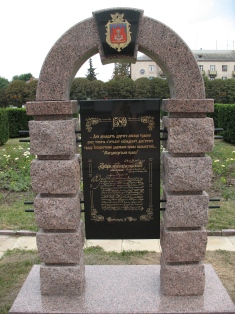 After the division of Russia as a result of the formation in 1157 of the Volodymyr-Suzdal and the Grand Duchy of Moscow (1260-70), Iskorosten remained under the jurisdiction of the Kiev princes. Since 1243, the Mongol-Tatars have ruled here. In 1348 and 1370, the Grand Duke of Lithuania Algirdas Olhed won victories over the Teutonic Order and, pushing back the Tatars, annexed these lands to the Grand Duchy of Lithuania. Later, he gives them to one of his knights, Terekh (from Bryansk), for faithful service. Since 1385, after the formation of the Krevska Union, this territory has come under the influence of Poland. In 1586, the rich Polish tycoon Prokop Mrzhevytskyi, having married one of Terekh’s heiresses, became the owner of Iskorosten. He manages to get the Polish king to give this small fortress the status of a city. On May 22, 1589, Sigismund III grants the Magdeburg right to the city of Iskorosten, which provides for self-government and the rights of citizens.
After the division of Russia as a result of the formation in 1157 of the Volodymyr-Suzdal and the Grand Duchy of Moscow (1260-70), Iskorosten remained under the jurisdiction of the Kiev princes. Since 1243, the Mongol-Tatars have ruled here. In 1348 and 1370, the Grand Duke of Lithuania Algirdas Olhed won victories over the Teutonic Order and, pushing back the Tatars, annexed these lands to the Grand Duchy of Lithuania. Later, he gives them to one of his knights, Terekh (from Bryansk), for faithful service. Since 1385, after the formation of the Krevska Union, this territory has come under the influence of Poland. In 1586, the rich Polish tycoon Prokop Mrzhevytskyi, having married one of Terekh’s heiresses, became the owner of Iskorosten. He manages to get the Polish king to give this small fortress the status of a city. On May 22, 1589, Sigismund III grants the Magdeburg right to the city of Iskorosten, which provides for self-government and the rights of citizens.
During this era, the Grand Duchy of Moscow expanded and strengthened. Moscow has been declared the capital of the unified Russian state, and the territories of the former Kyivan Rus are already on the outskirts of Russian lands, and they are now called Ukraine (located “near the edge” of the borders). Ukraine with its rich resources is a temptation for many states: Poland – from the west, Turkey – from the south, Lithuania and Sweden – from the north. In response to all these harassments, a military-political order – the Cossacks – was born in Ukraine. In the very heart of feudal Eastern Europe, an unprecedented democratic structure is emerging – Zaporizhzhya Sich, which takes care of the protection of the territory, the nation and the Orthodox Christian faith. For centuries, Cossacks have been waging fierce wars of independence against Poles, Turks and Crimean Tatars.
In 1649, a detachment of Cossacks under the command of Heraski, after a bloody battle, liberated Iskorosten from the Polish nobility. The city fortifications were completely destroyed. In 1654, as a result of the Pereyaslav Rada, Hetman Bohdan Khmelnytskyi signed an agreement with the Russian Tsar Oleksiy Mykhailovych on the transfer of Ukraine under the jurisdiction of Russia. However, from 1667 to 1795, the lands of Iskorosten continued to be part of the Polish-Lithuanian Commonwealth.
In 1795, Iskorosten passed to the Russian Empire as the center of Iskorosten Volost, Ovrutsky District, Volyn Province. For a long time it was a quiet, unremarkable provincial town. A note from the newspaper “Volyn Eparchyal Information” from 1888 has been preserved, where they write about it: “Nowadays Iskorosten is a poor, insignificant town, inhabited by Jews and bread-growing peasants.”
The life of the inhabitants of Iskorosten changed dramatically with the construction of the Kyiv-Kovel railway in 1902. At the beginning of the 20th century, more than three thousand people lived in Iskorosten. There were several small enterprises in it: furniture, mechanical and leather workshops, a porcelain factory. The city became the site of many events during the years of revolution and civil war. During the first Russian revolution, the workers of Iskorosten supported the strike. And in November 1917, together with the revolutionary soldiers, they established the Soviet government (at that time the city was renamed Korosten). November 18, 1917 station duty officer L.M. Tabukashvili announced the establishment of Soviet power at a rally held on Barachnaya Square.
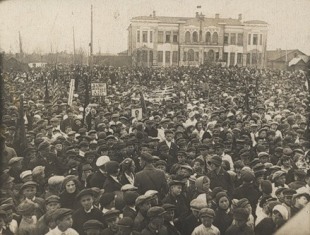 On February 12, 1918, at a meeting of the Small Council in Korosten, a law was approved on the introduction of the new Gregorian (currently valid) calendar in the Ukrainian People’s Republic, on the transition to Central European (currently valid) time, and the symbol of the Kyiv State – the trident – was approved as the emblem of the Ukrainian People’s Republic. At the end of February, the Kaiser’s troops entered the city. From July 15, 1918 Korosten is one of the centers of the All-Ukrainian strike of railway workers. After the retreat of the Germans from Ukraine in 1919 the city was liberated by the UNR troops. On February 18, a division of the Red Army entered Korosten. On March 15, 1919, the UNR troops entered the city again. On April 7, 1919, the Bogunskyi and Taraschanskyi regiments of the Red Army entered the city. On April 26, 1920, the city was captured by Polish troops. On June 20, Korosten was liberated by units of the 1st Cavalry Army, but in September the Poles captured the city again. On October 12, 1920, after many days of fighting, the Red Army finally liberated the city. In 1921, the capture of Korosten was the main goal of the campaign by the troops of the Ukrainian People’s Republic under the leadership of Major General Y. Tyutyunnik. On the night of November 7, 1921. a desperate four-hour battle broke out on the outskirts of the city – the last battle of the civil war in Ukraine, and Korosten was again liberated by the Red Army.
On February 12, 1918, at a meeting of the Small Council in Korosten, a law was approved on the introduction of the new Gregorian (currently valid) calendar in the Ukrainian People’s Republic, on the transition to Central European (currently valid) time, and the symbol of the Kyiv State – the trident – was approved as the emblem of the Ukrainian People’s Republic. At the end of February, the Kaiser’s troops entered the city. From July 15, 1918 Korosten is one of the centers of the All-Ukrainian strike of railway workers. After the retreat of the Germans from Ukraine in 1919 the city was liberated by the UNR troops. On February 18, a division of the Red Army entered Korosten. On March 15, 1919, the UNR troops entered the city again. On April 7, 1919, the Bogunskyi and Taraschanskyi regiments of the Red Army entered the city. On April 26, 1920, the city was captured by Polish troops. On June 20, Korosten was liberated by units of the 1st Cavalry Army, but in September the Poles captured the city again. On October 12, 1920, after many days of fighting, the Red Army finally liberated the city. In 1921, the capture of Korosten was the main goal of the campaign by the troops of the Ukrainian People’s Republic under the leadership of Major General Y. Tyutyunnik. On the night of November 7, 1921. a desperate four-hour battle broke out on the outskirts of the city – the last battle of the civil war in Ukraine, and Korosten was again liberated by the Red Army.
In March 1923, the history of Korosten received a new round of development – it was inhabited
This point became a city-type settlement, and on January 1, 1926, it was granted the status of a city. In 1926, the premises of the I.Frank Drama Theater were built, in 1927-1929, the “October Forge” factory was built on the basis of Osterman’s former workshops, in 1928, after reconstruction, the porcelain factory began to work. In 1930, two secondary special educational institutions were opened – a medical technical school and a technical school of Soviet construction, two evening working faculties – the Kyiv Machine-Building Institute and the Kharkiv Institute of Railway Transport Engineers.
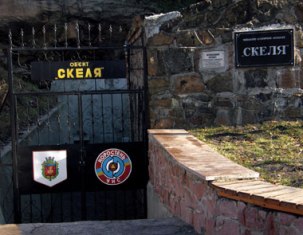 During the Second World War, during Germany’s attack on the Soviet Union, Korosten, as a major railway junction, was subjected to intense and continuous bombardment by German aircraft from the first hours of the war. Despite the destruction and losses, the railway worked non-stop, supplying the front with supplies, equipment and ammunition, and evacuating the wounded and civilians. In addition, Korosten is the most important stronghold in Kyiv’s defense system. A strategic line of defense (the “Rock” object, famous throughout Ukraine with fortified areas) designed by the legendary General Karbyshev passed near the city. It was here, thanks to the heroic resistance of General Potapov’s Fifth Army, that the advance of Hitler’s troops was delayed for a whole month. The number of losses on both sides was measured in tens of thousands.
During the Second World War, during Germany’s attack on the Soviet Union, Korosten, as a major railway junction, was subjected to intense and continuous bombardment by German aircraft from the first hours of the war. Despite the destruction and losses, the railway worked non-stop, supplying the front with supplies, equipment and ammunition, and evacuating the wounded and civilians. In addition, Korosten is the most important stronghold in Kyiv’s defense system. A strategic line of defense (the “Rock” object, famous throughout Ukraine with fortified areas) designed by the legendary General Karbyshev passed near the city. It was here, thanks to the heroic resistance of General Potapov’s Fifth Army, that the advance of Hitler’s troops was delayed for a whole month. The number of losses on both sides was measured in tens of thousands.
Since August 7, 1941, the dark days of occupation have come in the history of Korosten and the people of Korosten. But the city did not surrender. Underground groups and partisan units operated in the territory of Korosten and the district, causing significant damage to the German troops, destroying soldiers and officers, blowing up bridges and warehouses, paralyzing train movements. The Hitlerites dealt brutally with the patriots. During the occupation, 16,733 people were shot in the city, 15 people were hanged, and 1,803 people were taken to Germany for forced labor.
At the onset of 1943, as a result of the Kyiv operation, the Red Army liberated Korosten on November 17, but the German command could not allow the loss of such an important strategic point. In the course of a powerful tank counteroffensive with the support of aviation and artillery, the German troops again took control of the city, despite the persistent resistance of the defending garrison. Korosten remembers and honors the memory of its fallen defenders with many monuments and street names. And the exploits of the soldier Abdula Usenov, who stopped the German tanks with his life, and the pilot Polyakov, who carried out a ram in the sky over Korosten, are recorded in the annals of the History of the Great Patriotic War. Both were posthumously awarded the title of Hero of the Soviet Union. However, the names of many heroes who rest in the land of Korosten are unknown to this day. The feat of the soldiers of the dungeon of the old fortress above the Uzh River remains an unsolved secret and a topic for research… On December 28, 1943, the city was finally liberated by units of the 13th Army of Lieutenant General Pukhov.
As a result of the war, Korosten was again completely destroyed. But this city is hard to get used to. As in all times, he was reborn little by little from the ashes. During the war years, the reconstruction of the almost completely destroyed city began. By May 1945, the railway junction and the porcelain factory were fully operational. In 1947, the “October Forge” factory started production again. In 1949, the “Torfmash” plant was built (since 1961, “Korostenhimmash”). In 1960, a factory of reinforced concrete sleepers was put into operation, and in 1964 – a cotton factory. In 1966, a children’s sports school was opened, and in 1970, the House of Culture of Railway Workers with 850 seats.
In the 80s and 90s of the 20th century, the history of Korosten was written in bitter lines – the city had to go through difficult times. The proximity to the Chernobyl Nuclear Power Plant (90 km) left a new tragic imprint on its history. Korosten fell into the zone of radioactive contamination as a result of the Chernobyl nuclear disaster on April 26, 1986 and is classified as a “zone of guaranteed voluntary evacuation”. Korosten is the largest settlement on the territory of the zones affected by the accident at the Chernobyl nuclear power plant.
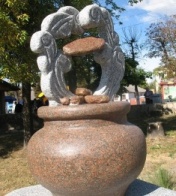 But this tragedy did not stop the development of the city. After the short-term resettlement of the city’s residents to other regions of Ukraine, the city’s life resumed at its former level. Again, houses are being built in Korosten, roads are being repaired, and children are being born. Today, Korosten is a wonderful corner of Ukrainian Polissia in Zhytomyr Oblast, a major transport hub of the South-Western Railway. It is famous for its amber rosin resins, mechanical plant products, reinforced concrete products, khimmash, woodworking industry and other enterprises. The first modern factory for the production of MDF boards in Ukraine began operating in the city. In 2005, thanks to archeological excavations by scientists, Korosten celebrated its 1300th anniversary. Since 2008, the city has been hosting the All-Ukrainian festival-fair “Deruna Day”, which even tourists from far abroad come to.
But this tragedy did not stop the development of the city. After the short-term resettlement of the city’s residents to other regions of Ukraine, the city’s life resumed at its former level. Again, houses are being built in Korosten, roads are being repaired, and children are being born. Today, Korosten is a wonderful corner of Ukrainian Polissia in Zhytomyr Oblast, a major transport hub of the South-Western Railway. It is famous for its amber rosin resins, mechanical plant products, reinforced concrete products, khimmash, woodworking industry and other enterprises. The first modern factory for the production of MDF boards in Ukraine began operating in the city. In 2005, thanks to archeological excavations by scientists, Korosten celebrated its 1300th anniversary. Since 2008, the city has been hosting the All-Ukrainian festival-fair “Deruna Day”, which even tourists from far abroad come to.
Meanwhile, new hotels and rest and public catering facilities are appearing in Korosten, because the flow of tourists is increasing from year to year. In addition to the well-known internationally.
The city also hosts the “Princely Legacy” festival with battle reenactments, the “Just for the Protection” literary festival for writers and readers, as well as many historical and archaeological conferences that gather famous scientists.
Korosten is especially beautiful in autumn, when the park is decorated with colorful trees, and the observation decks offer incredible views of the city. Therefore, plan a trip to Korosten – you will definitely not regret it.

The city of Korosten has much to be proud of. But most importantly, this wonderful city is famous for its people – the descendants of the ancient Drevlians.
Study the history of Korosten, write the history of the city together with the residents of this Drevlya region, and be sure to come and visit!
